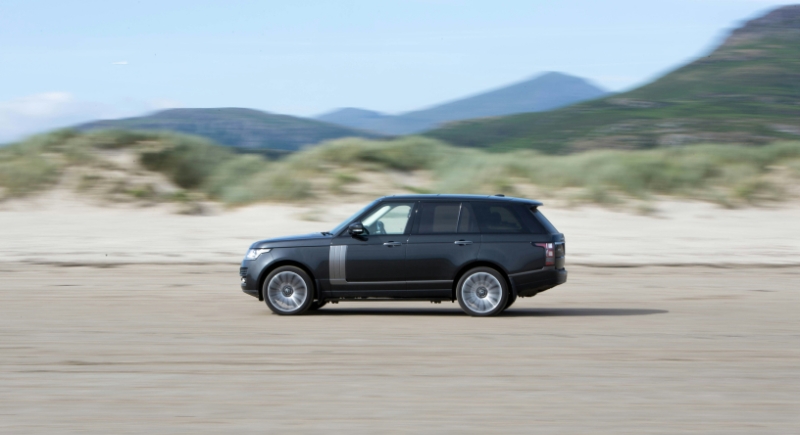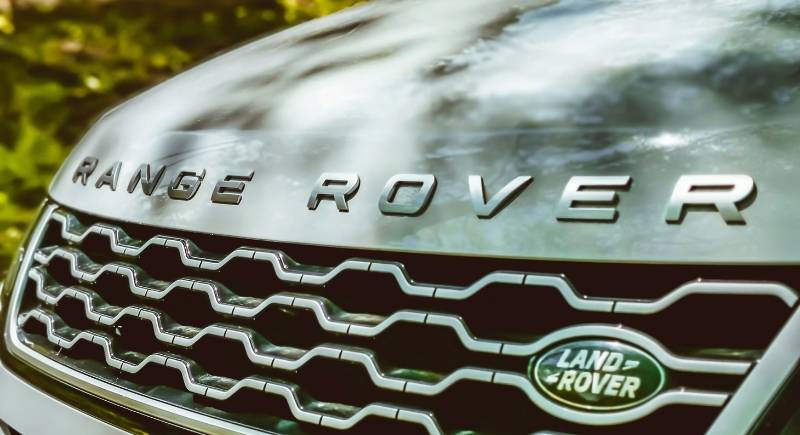The first Range Rover rolled onto the scene in 1970 with a boxy body and the DNA of a workhorse.
Rover engineers built it to merge off-road toughness with something a little more civilized for city streets. It didn’t look too fancy, but it was smart. Permanent four-wheel drive, a V8 engine, and coil—spring suspension were practical features that made the SUV feel stable on dirt and smooth on asphalt.
Its early buyers were farmers, engineers, and country folks who needed utility. But over time, the image shifted, and the world started looking at it differently.
Shifting Image and Cultural Spotlight

Image via Unsplash/Samuel Thompson
The Louvre once displayed a Range Rover as an example of industrial design. That’s not common for cars, especially not for something that also drives through jungle mud. It was rare to find something this capable that didn’t rattle your teeth on pavement. By the early 1980s, Range Rover started adding more city comforts like power steering, plush seating, and four doors. People with influence started showing up in them. Before long, the countryside SUV became the go-to vehicle for royalty, hedge fund managers, celebrities, and billionaires.
In TV and film, directors knew exactly what they were doing when they put characters in Range Rovers. Succession had them lining tarmacs and ferrying rich characters through Manhattan. The Sopranos used it too; when a young gangster earned his stripes, he bought a Range Rover.
Cultural Endorsement and Innovation
Music artists followed the same logic. Names that have shaped fashion, culture, and style, like Jay Z, Beyoncé, and Nas, have all referenced the brand in lyrics. These were reflections of real life. The SUV had moved into the world of symbols.
None of this happened because the company ran a clever ad campaign. It happened because the Range Rover filled a gap. There weren’t many cars that felt equally comfortable in front of Buckingham Palace and parked on a dusty trail. Speaking of, British royalty embraced it early. Queen Elizabeth II drove one around her estates for years. Prince Philip had one converted into a funeral hearse, years before he passed.
But let’s not pretend the badge alone made it a symbol of power. It also had substance. Electronic traction control came in the late '80s. Terrain Response arrived later and let drivers adjust the SUV’s behavior for different surfaces. The second generation in the '90s brought better engines and more tech. Then the third and fourth generations added more luxury, more polish, and more presence. Yet the off-road guts never went away. You could still drive it through a desert if you felt like it.
By the 2000s, Range Rover had expanded its lineup. The Sport was for buyers who wanted more punch. The Evoque was smaller, slicker, and more urban. The Velar sat between the two, styled like it belonged in an art gallery. Each had a purpose, but they all carried the same attitude. That's a hard thing to replicate in automotive design, and it’s why many brands have tried to copy the look and appeal—with limited success.
An Image That Speaks for Itself

Image via Unsplash/Michael Heuser
It also helps that Range Rover hasn’t flooded the market. The pricing keeps it out of reach for most, which only fuels the appeal.
There’s been some criticism along the way. Some think it’s too showy and owners rarely take it off-road, which misses the point. No one complains that Rolex owners don’t dive to 300 meters. People buy it for what it represents, and because it works when it needs to. And the truth is, a Range Rover still can climb, crawl, and wade through water if required. Most people won’t push it to those limits, but they like knowing it could.
A Future Still Tied to Its Roots
Now the brand is moving toward electrification. The new electric Range Rovers are entering the market with the same attention to detail, but with a reduced environmental impact. Luxury buyers are reevaluating sustainability in a new light, and Range Rover appears to recognize that the next chapter must look forward.
